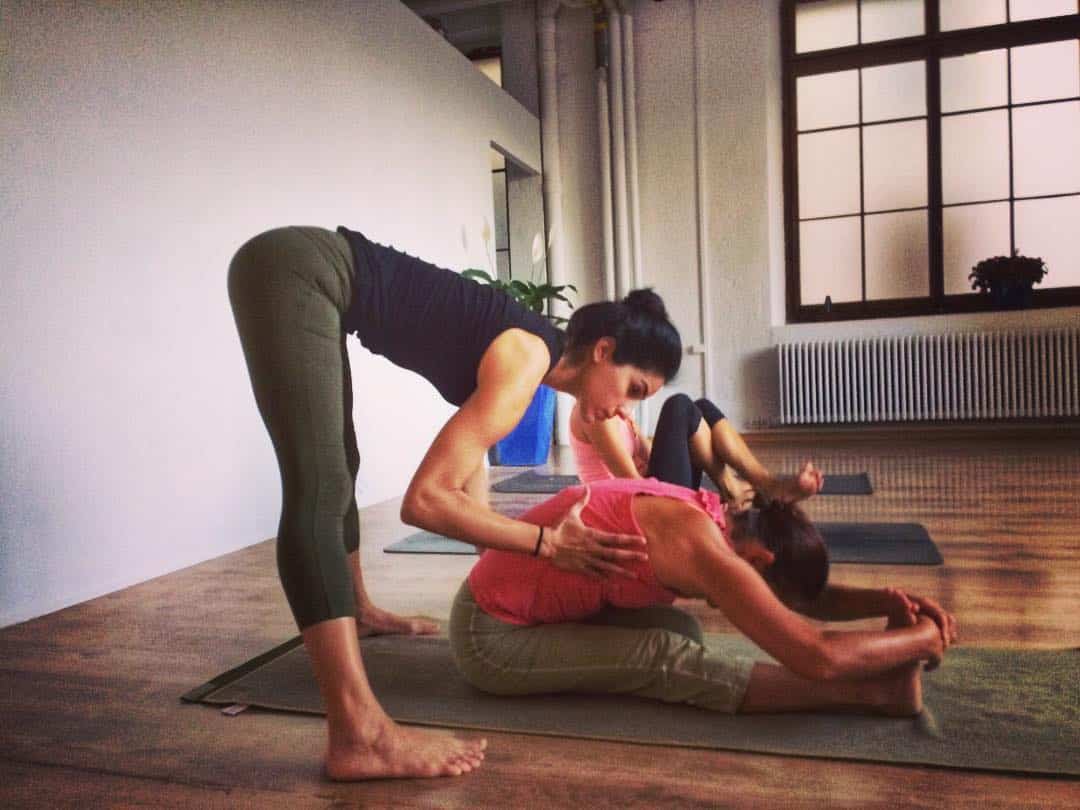Many athletes and movement practitioners often get injured because they struggle to differentiate between harmful pain and healthy discomfort. Discomfort can be described as pushing beyond our comfort zones by engaging muscle groups that are new to us or have not been used in a while, exploring a wider range of joint movement, and stretching our muscles beyond what our daily activities require. It also involves raising our cardio level above a resting state.
Yoga, when practiced with respect for the step-by-step instructions of an experienced and knowledgeable teacher, can be considered a relatively low-risk movement practice. It is important to focus on functional yoga rather than pursuing aesthetic perfection in postures. Patience is key, and one should avoid rushing the process in order to achieve a specific aesthetic form of a posture.
Injuries can occur in yoga due to various reasons:
1. Getting too caught up in the form of the asana and neglecting the breath.
2. Lack of proper alignment.
3. Repeating faulty movements.
4. Pushing beyond one’s limits and ignoring warning signals of pain.
5. Prioritising the final appearance of a posture (aesthetic) over the intention behind it (function).
6. Getting ahead of one’s self and ambitious
7.Forceful adjustments from a teacher without considering the student’s limitations.
It’s important to note that our brains do not fully comprehend the word “pain,” so it’s necessary to define what pain actually is. Pain can manifest in various ways, including:
– Excess heat (burning sensation)
– Excess cold (freezing sensation)
– Compression (limited joint space, compressing a nerve, wearing out cartilage, or bone-to-bone contact in advanced osteoarthritis)
– Pressure (force applied to a surface, different from compression)
– Extreme pulling (straining tendons, muscles, or ligaments)
– Nerve pain (electric shock-like sensations in certain body parts)
– Inflammation pain (cramping feeling in an organ, pounding headaches, or swollen body parts)
– Emotional pain (feeling heavy and blocked in specific areas, ie. pressure on the upper back, chest and throat)
To distinguish between pain and discomfort experienced during the learning of new movements or activities, consider the following:
Stretching may cause some discomfort, but it should be a “sweet” discomfort, similar to the discomfort of a deep massage that ultimately feels good and relieving. It should leave you feeling light, with improved range of motion and relaxation. You should be able to walk and function normally after releasing from a posture.
Signs that you may be pushing too far include agitated breathing, quick breaths or breath-holding, facial muscle contractions, irritation, pulling sensations in tendon insertions, and burning sensations during or after the practice. If you cannot use a body part as usual or experience aching or limping, you’ve likely gone too far.
Returning to yoga after a week or more of not practicing may cause some soreness due to stretching or muscle engagement. However, feeling sore behind your legs, lower back, or hamstring insertions to the ischium every time after class is a warning sign that should not be ignored. Inform your teacher immediately.
When learning something new that requires strength and stability, you may engage muscles that haven’t been used before. It’s okay if these muscles tremble slightly, but it’s important not to stay in that position for too long. Gradually build strength and stability, and if you lack them, you may collapse onto another body part, potentially causing compression in another joint.
For example, when learning headstand, if your arms are not strong enough to bear weight, you may collapse onto your head, compressing the cervical spine. Similarly, during drop backs, if you lack leg strength, stability, or spinal flexibility, collapsing onto the lumbar vertebrae can be harmful.
If you experience any of the following examples, take them seriously and inform your teacher:
– Burning sensation behind the legs after practice or discomfort that persists after the practice or the following days.
– Pinching or pulling feeling behind an elbow.
– Compression in the wrist, feeling of nerve pain running into the hand.
– Pinching feeling around the shoulder during chaturanga.
– Pulling in the front of the arm during internal rotation or arm balances.
– Soreness in the lower back/mid back during or after practice.
– Feeling of compression inside the knee joint or pulling sensation around the knee joint.
– Pulling on the ligaments of the outer ankle, which can destabilise the ankle joint.
– Compression in the hip joint, or inner thigh when one twist againt one leg.
– Neck ache after practice, or constant need to crack or stretch the neck.
Additionally, if you feel exhausted, overwhelmed, overly emotional, agitated, or experience feelings of unworthiness or inadequacy after yoga practice, it is important to discuss these emotions with your teacher, as they can be more harmful than physical suffering.
If a teacher in Casa Vinyasa or any shala you visit takes you to experience these definitions of pain, it is your responsibility to communicate. Speak up immediately and explain how you feel because the teacher may not be aware of your internal experience. It is also important to inform your teacher on days when you haven’t slept well, emotionally hurting/stressed, recovering from an illness, fasting, detoxing, have your period or aching somewhere… Your body is not as stable, strong, open, adaptable as other days. A wise teacher would let you be, giving gentle assistance/corrections, as with the slightest touch you might be thrown off balance, pull a tendon. Etc. … Those are also not the day to be out of the comfort zone and facing more challenges.
Being out of one’s comfort zone and challenging one’s self is a different experience than psychologically or physically suffering. Remember that the purpose of yoga is to promote well-being and reduce suffering, both mentally and physically. It should leave you feeling better and healthier, not exacerbate any existing pain. By prioritising your own needs and communicating with your teacher, you can ensure a safe and beneficial yoga practice.


